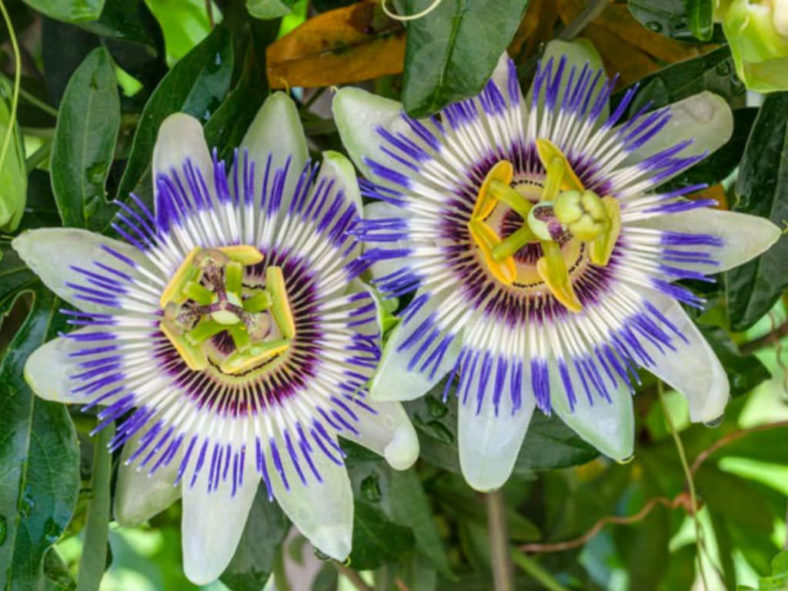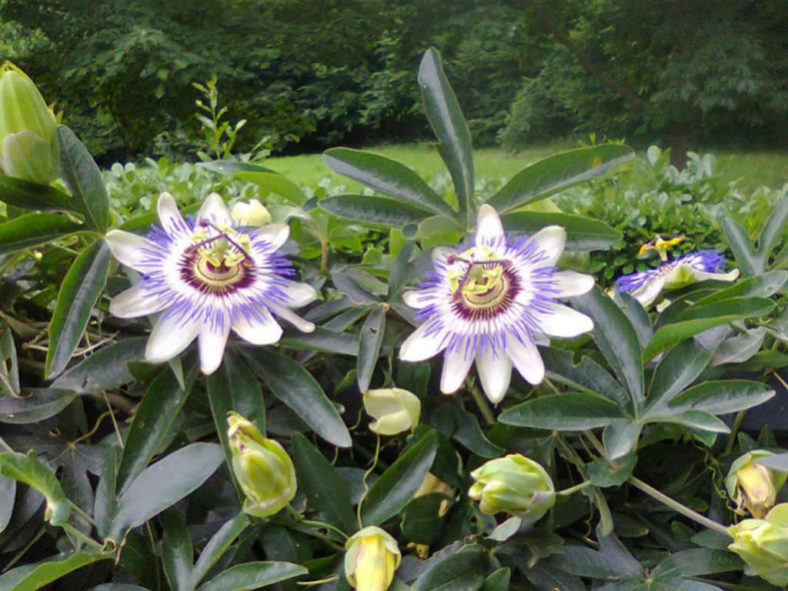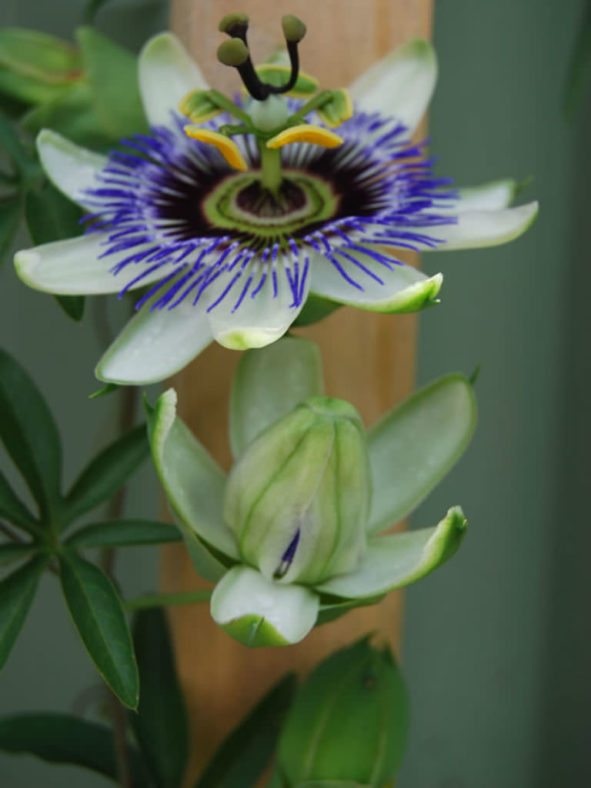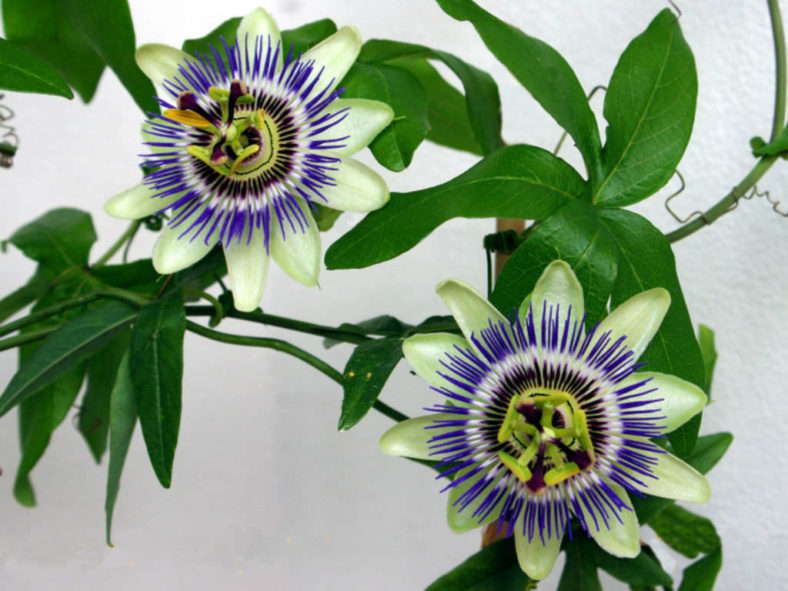Scientific Name
Passiflora caerulea L.
Common Name(s)
Blue Passion Flower, Blue Crown Passion Flower, Common Passion Flower, Hardy Passion Flower, Passion Vine
Synonym(s)
Passiflora loureiroi, Passiflora selloi
Scientific Classification
Family: Passifloraceae
Genus: Passiflora
Flower
Color: White and blue or violet
Bloom Time: Mid-summer to early fall
Description
Passiflora caerulea is a woody vine capable of growing up to 65 feet (20 m) high where supporting trees are available. The leaves are alternate, palmately five-lobed like a spread hand (sometimes 3 or 7 lobes), up to 7 inches (18 cm) long, and as wide as they are long. The base of each leaf has a flagellate-twining tendril up to 4 inches (10 cm) long, which twines around supporting vegetation to hold the plant up.
The complex flowers have five sepals and petals similar in appearance, whitish in color, surmounted by a corona of filaments, then five greenish-yellow stamens and three purple stigmas. They are up to 4 inches (10 cm) in diameter. Fruits are oval, orange-yellow berries up to 2.4 inches (6 cm) long and 1.6 inches (4 cm) in diameter, containing numerous seeds.

Hardiness
USDA hardiness zone 6a to 10b: from −10 °F (−23.3 °C) to 40 °F (+4.4 °C).
How to Grow and Care
Their vibrant colors and heady fragrance make the Passion Flower a welcome addition to any garden. Unfortunately, because of its origins, most species of Passion Flower plant can't overwinter in many gardens in the United States. However, there are a few that will survive up to USDA plant hardiness zone 5. Most varieties will grow in Zones 7-10.
Because they are vines, the best place for growing Passion Flower is along a trellis or fence. The tops will be killed off during winter, but if you mulch deeply, your Passion Flower plant will return with new shoots in the spring. Since growing Passion Flowers can reach 20 feet (6 m) in a single season, this die-back will help keep the vine under control.
Tropical Passion Flowers need full sun and well-drained soil. Two applications of a well-balanced fertilizer per year, once in early spring and one in midsummer, are all the Passion Flower care you'll need.
See more at How to Grow and Care for Passion Flowers.
Origin
Passiflora caerulea is native to South America (Argentina, Chile, Paraguay, Uruguay, and Brazil).
Links
- Back to genus Passiflora
- Plantpedia: Browse flowering plants by Scientific Name, Common Name, Genus, Family, USDA Hardiness Zone, or Origin
Photo Gallery
Click on a photo to see a larger version.




